The dispatch stated: On the afternoon of October 3, 2025, storm MATMO moved into the East Sea and became storm No. 11, with the strongest wind near the storm center at level 10, gusting to level 13. According to the forecast of the National Center for Hydro-Meteorological Forecasting, storm No. 11 will continue to strengthen to level 12-13, gusting to level 15-16, moving quickly to the Gulf of Tonkin; on October 5-7, 2025, the storm will directly affect the Gulf of Tonkin, the coast and mainland of our country, continuing to cause heavy rain in the Northern region and Thanh Hoa, Nghe An .
Storms No. 9, 10 and 11 appeared consecutively, right when the work to overcome the consequences of the previous storm and flood had not yet been completed. This is a form of double natural disaster (storm on storm, flood on flood), with a very high risk of flash floods, landslides and inundation in urban areas and low-lying areas, threatening the safety of the traffic system and dams in Lai Chau province.
Implementing the Prime Minister 's Official Dispatch No. 186/CD-TTg dated October 4, 2025 on proactively responding to storm No. 11 in 2025. To proactively respond and minimize damage caused by storm No. 11 and storm circulation in Lai Chau province, the Chairman of the Provincial People's Committee requests the Provincial Civil Defense Command, provincial departments, branches, sectors, Party Committees, People's Committees of communes and wards:
1. Continue to monitor, update, and regularly provide forecasts, warnings, and developments of heavy rain, floods, flash floods, and landslides. It is necessary to be aware of the extremely dangerous nature of storm No. 11 when natural disasters overlap natural disasters, the risk of disasters overlapping disasters, multiple disasters (storms, floods, flash floods, landslides) to have plans and solutions to respond decisively, proactively, promptly, effectively, and appropriately to the developments in each locality and each time to ensure the safety of people's lives and property.
2. Deploy shock troops to inspect and review residential areas along rivers, streams, low-lying areas, areas at risk of floods, inundation, flash floods, and landslides. Organize forces to guard, control, support, and guide to ensure safe traffic for people and vehicles, especially at culverts, spillways, deep flooded areas, fast-flowing water areas, areas where landslides have occurred or are at risk of landslides.
3. Focus on protecting houses, warehouses, educational and medical facilities, dams, production and business activities, aquaculture, especially need to immediately check cold-water fish ponds to be ready to evacuate, relocate residents, and deploy rescue work when bad situations occur,...
4. Resolutely evacuate people from dangerous areas, prone to landslides, flash floods, and flash floods to safe, long-term stable places. Have plans to support temporary accommodation, food, and necessities for people who have to evacuate, ensuring a stable life for people; prepare forces, means, equipment, and necessities according to the "four on-site" principle to be ready to respond to all situations, especially for areas at risk of being isolated, areas that have suffered heavy damage due to natural disasters in the past. Put up warning signs, some dangerous locations need to arrange people on duty to request people not to go through tunnels, spillways, bridges, culverts, roads or areas that are deeply flooded, have fast-flowing water; routes at risk of flash floods and landslides.
5. Direct and organize inspections of production activities in river and stream areas; notify owners of water transport vehicles of flood information so that they can proactively take measures to ensure safety for people, property, equipment and works.
6. Lai Chau Newspaper, Radio and Television, the Provincial Electronic Information Portal, central news agencies and newspapers located in the province continue to update and provide regular and timely information on the developments of rain, floods and the instructions of the central government and the province so that people can proactively prevent and avoid them.
7. Department of Agriculture and Environment
- Direct and coordinate the inspection and early detection of potential risks to the safety of irrigation works, especially reservoirs, due to the impact of the recent heavy rains; proactively prepare and promptly deploy plans to ensure the safety of the works. Prepare safety measures for irrigation works under construction, be ready to relocate people, machinery, and construction equipment at risk of being affected.... Strictly comply with the operating procedures for reservoirs under construction or completed but not yet handed over. Operate reservoirs according to approved operating regulations; for reservoirs with flood discharge gates, adjust the reservoir water level to proactively receive floods, ensure absolute safety of the works and do not discharge floods abnormally, causing insecurity in downstream areas.
- Direct the implementation of flood drainage work to protect rice and crop areas at risk of severe flooding, and harvest agricultural production areas at harvest time early. Instruct the People's Committees at the commune level to closely follow the production situation, regularly monitor weather developments to take proactive measures to promptly respond to negative impacts caused by the weather.
8. The Department of Construction shall proactively organize the quick repair of landslide-affected roads; direct investors and construction contractors to take measures to ensure the safety of construction works in the area. Regularly inspect the drainage systems of traffic works, especially key and vulnerable works, locations where traffic accidents often occur; maintain warnings at dangerous locations that are at risk of causing traffic jams; proactively and regularly monitor the current situation, promptly detect locations at risk or that have collapsed to promptly repair and organize traffic flow to ensure smooth traffic.
9. The Department of Industry and Trade shall preside over and coordinate with the Department of Agriculture and Environment to strengthen inspection and early detection of potential safety risks for reservoirs and hydroelectric dams due to the recent heavy rains. Be ready to move people, machinery and equipment when there is a risk of safety; implement measures to ensure labor safety for reservoirs and hydroelectric dams under construction.
10. The Provincial Hydrometeorological Station shall strengthen information and warning work, closely monitor rain and flood developments, and promptly report to the Provincial People's Committee and communes and wards for direction.
11. The Department of Agriculture and Environment, People's Committees of communes and wards organize 24/24 hours on duty during periods of rain and floods; arrange permanent personnel at locations at risk of incidents. People's Committees of communes and wards promptly compile statistics on damage, report on response work to rain, floods, landslides due to the impact of storm No. 11 and storm circulation, and send them to the Department of Agriculture and Environment before 8:00 a.m. every day./.
Source: https://laichau.gov.vn/tin-tuc-su-kien/thong-tin-chi-dao-dieu-hanh/cong-dien-ve-viec-chu-dong-ung-pho-voi-mua-lon-sat-lo-dat-lu-ong-lu-quet-do-anh-huong-cua-bao-so-11-va-hoan-luu-bao.html




![[Photo] Prime Minister Pham Minh Chinh chairs the Government's online conference with localities](https://vphoto.vietnam.vn/thumb/1200x675/vietnam/resource/IMAGE/2025/10/5/264793cfb4404c63a701d235ff43e1bd)
![[Photo] Prime Minister Pham Minh Chinh launched a peak emulation campaign to achieve achievements in celebration of the 14th National Party Congress](https://vphoto.vietnam.vn/thumb/1200x675/vietnam/resource/IMAGE/2025/10/5/8869ec5cdbc740f58fbf2ae73f065076)






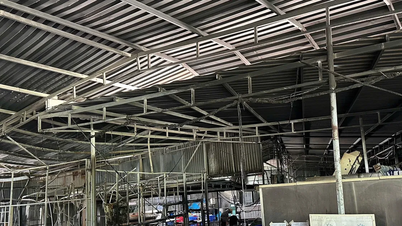



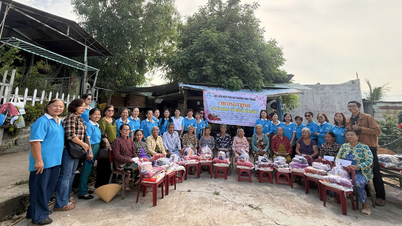









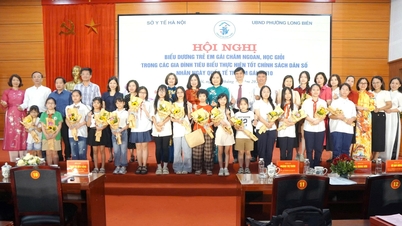
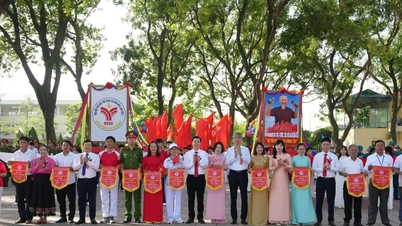
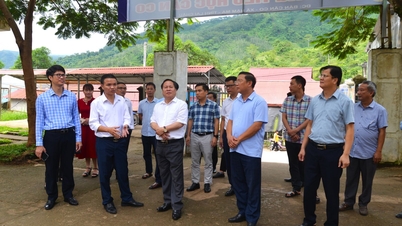
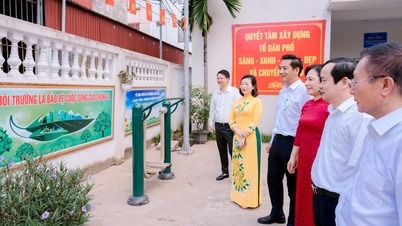

























![[VIDEO] Summary of Petrovietnam's 50th Anniversary Ceremony](https://vphoto.vietnam.vn/thumb/402x226/vietnam/resource/IMAGE/2025/10/4/abe133bdb8114793a16d4fe3e5bd0f12)

![[VIDEO] GENERAL SECRETARY TO LAM AWARDS PETROVIETNAM 8 GOLDEN WORDS: "PIONEER - EXCELLENT - SUSTAINABLE - GLOBAL"](https://vphoto.vietnam.vn/thumb/402x226/vietnam/resource/IMAGE/2025/7/23/c2fdb48863e846cfa9fb8e6ea9cf44e7)
















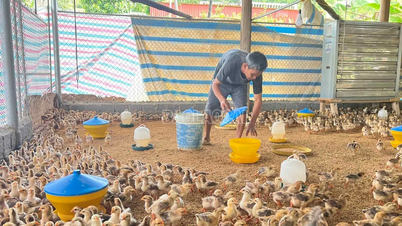



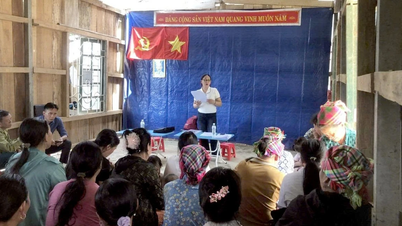
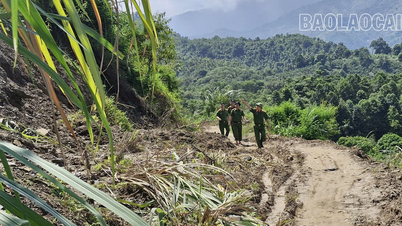













Comment (0)